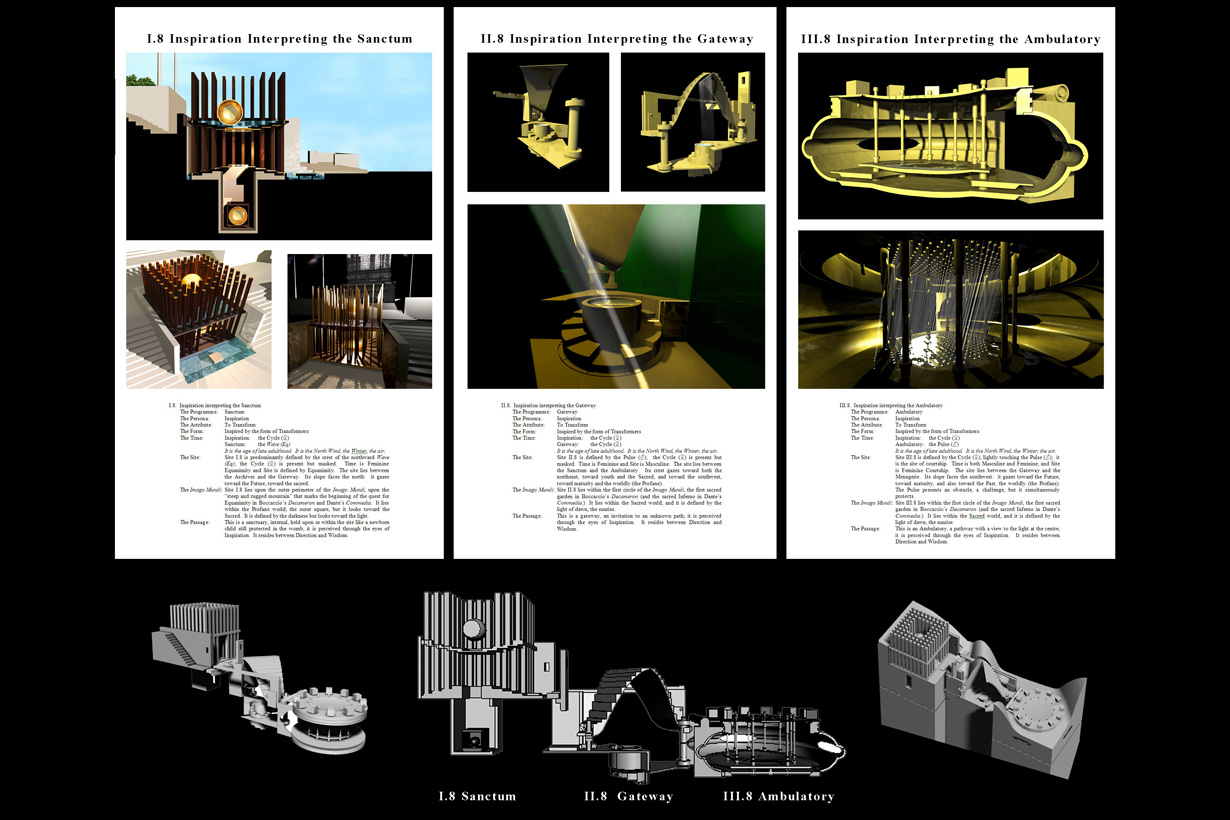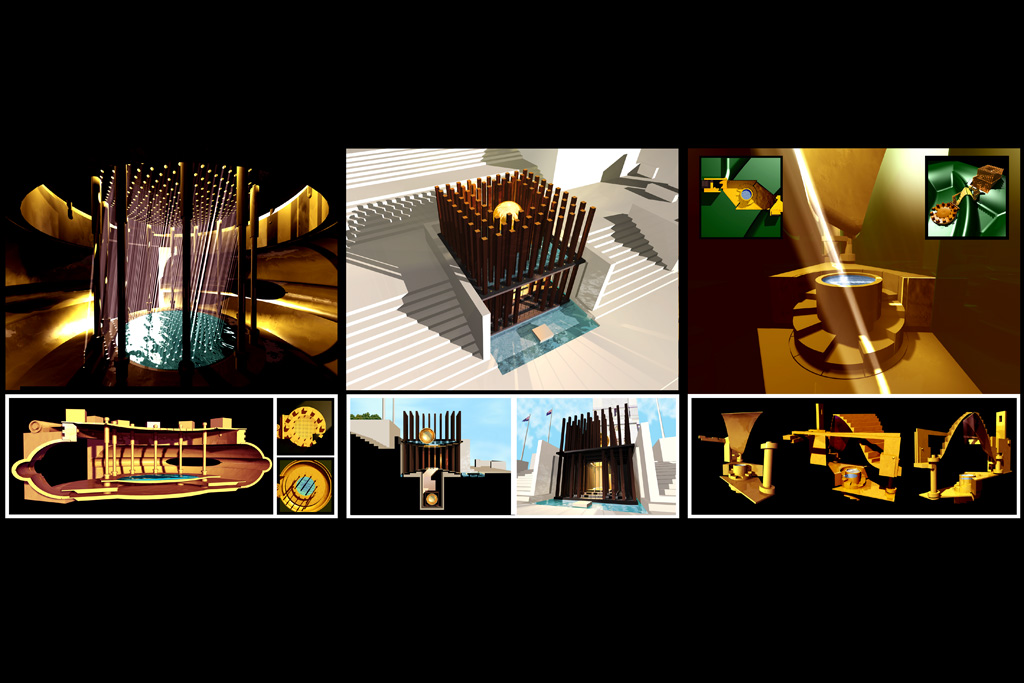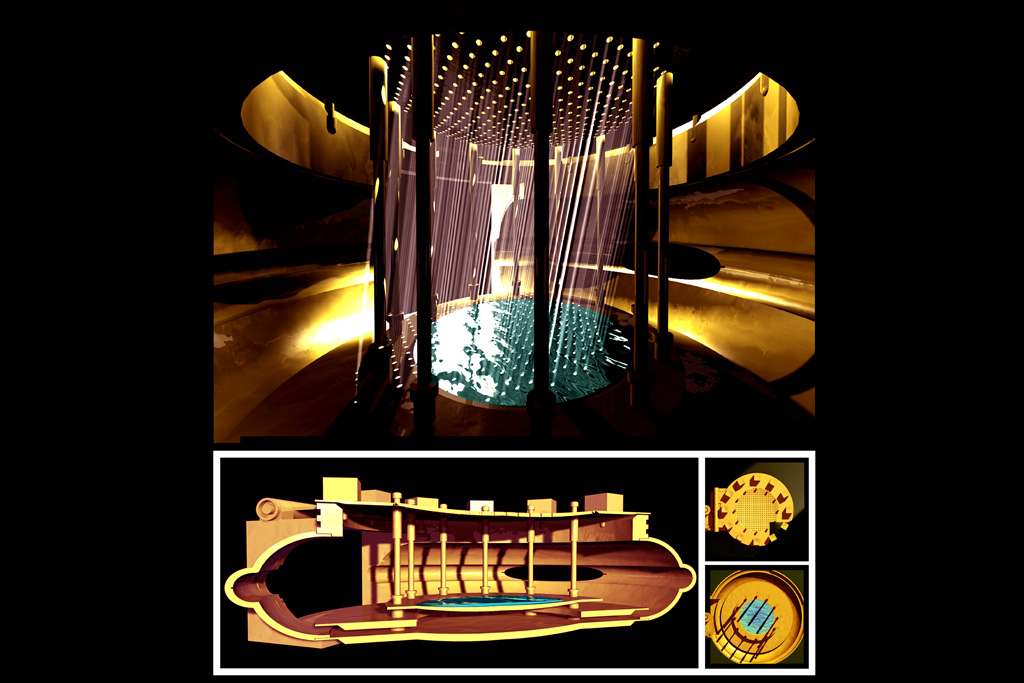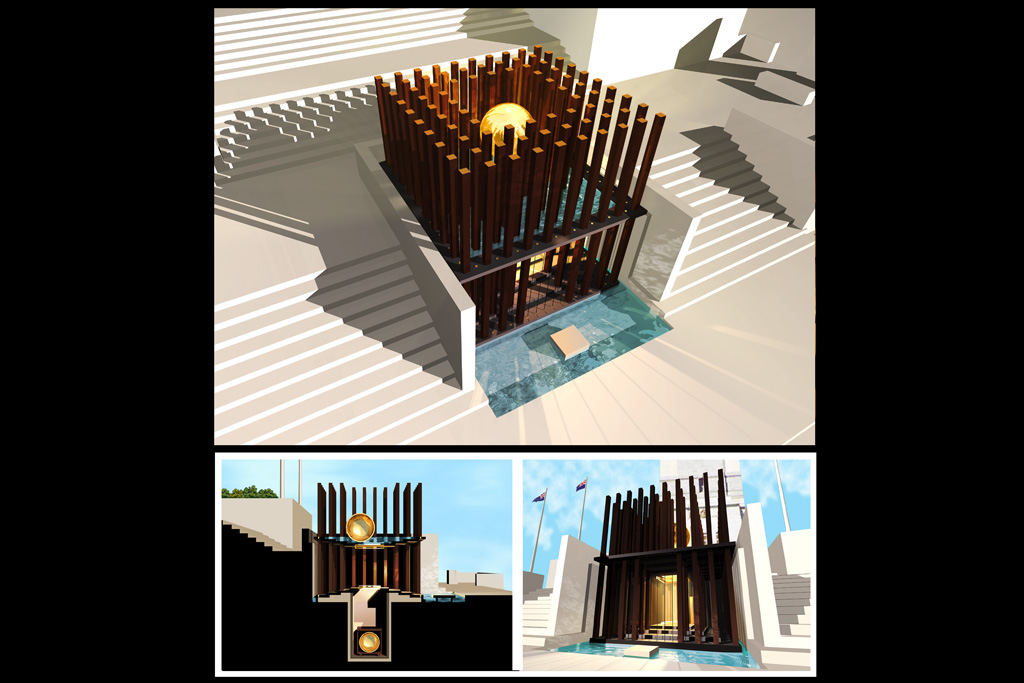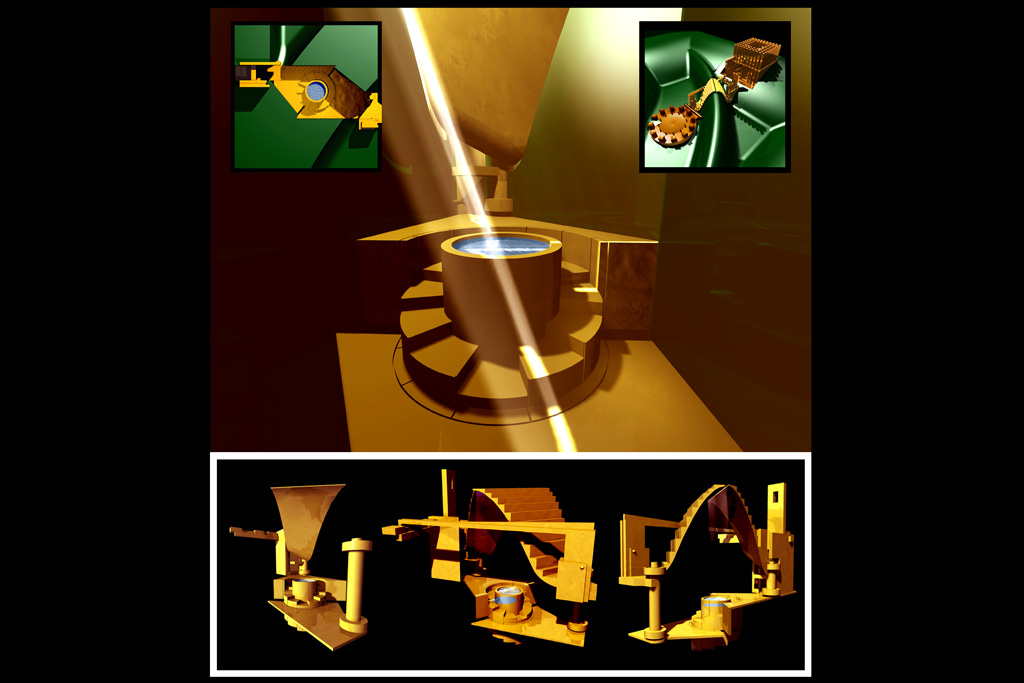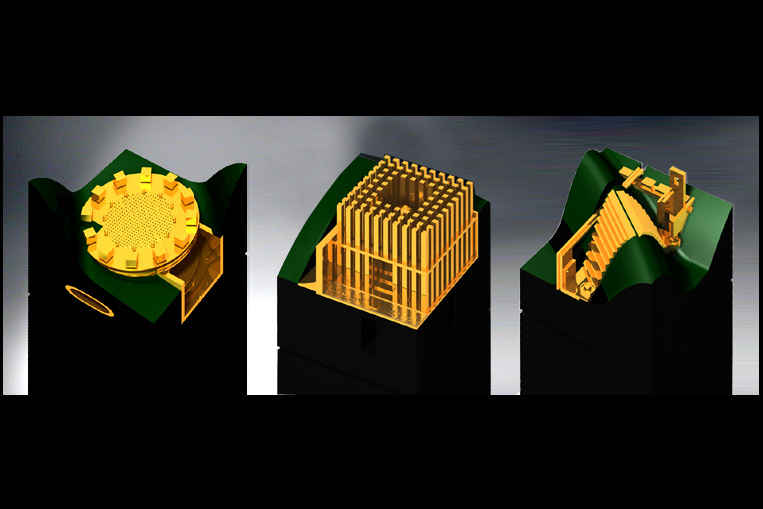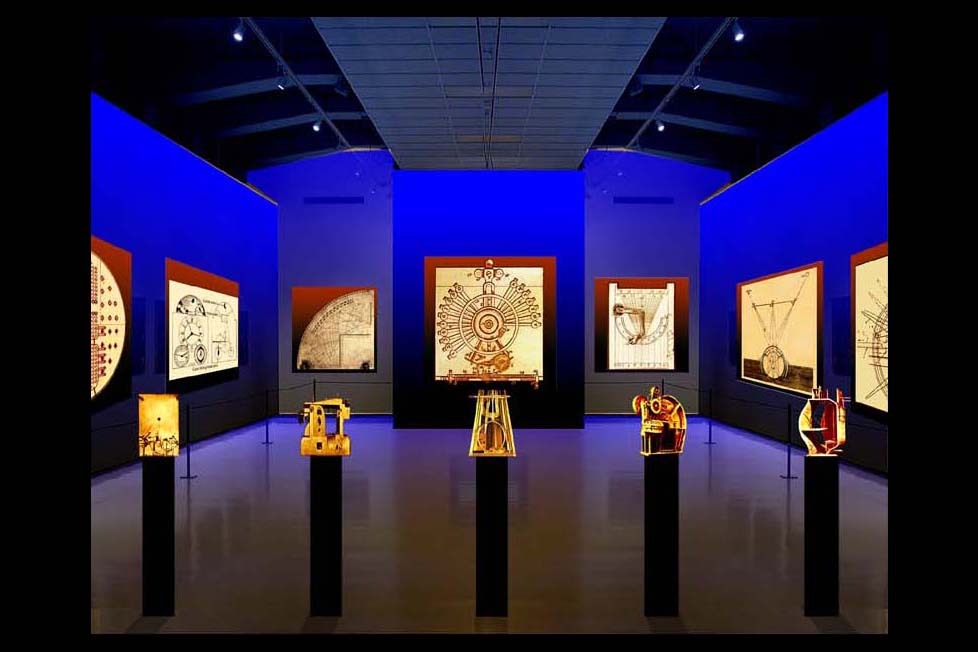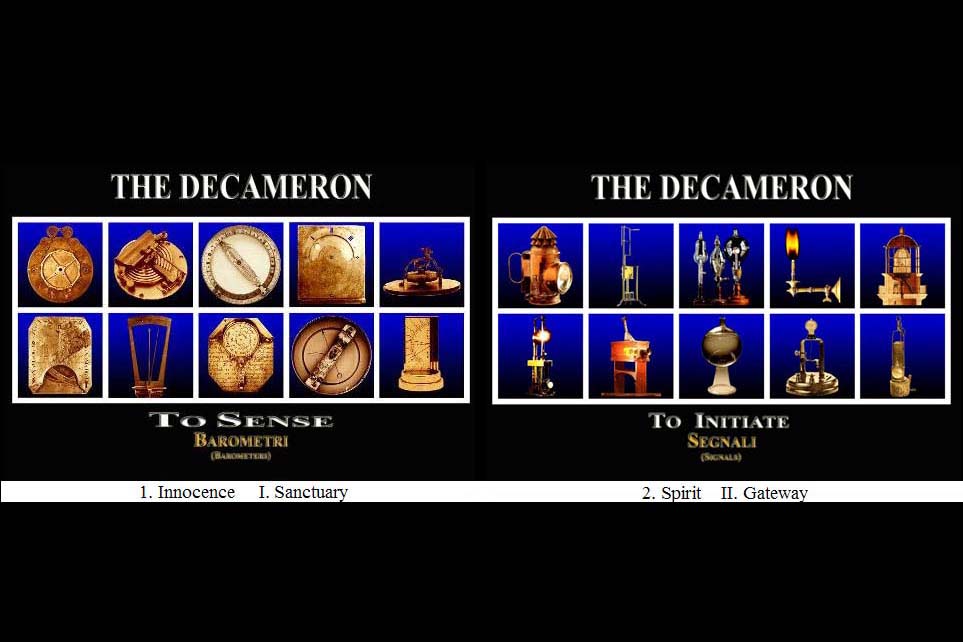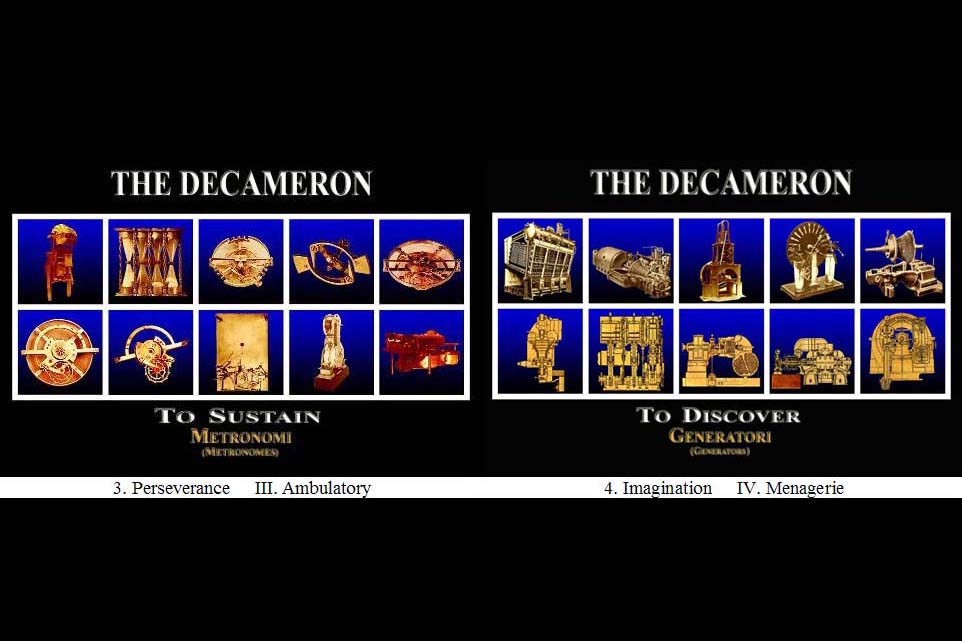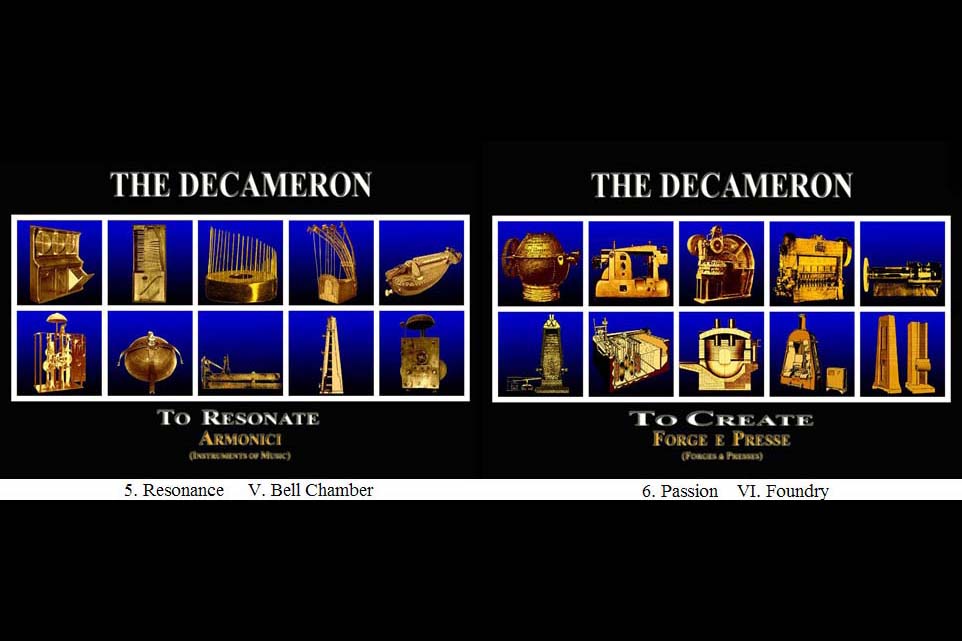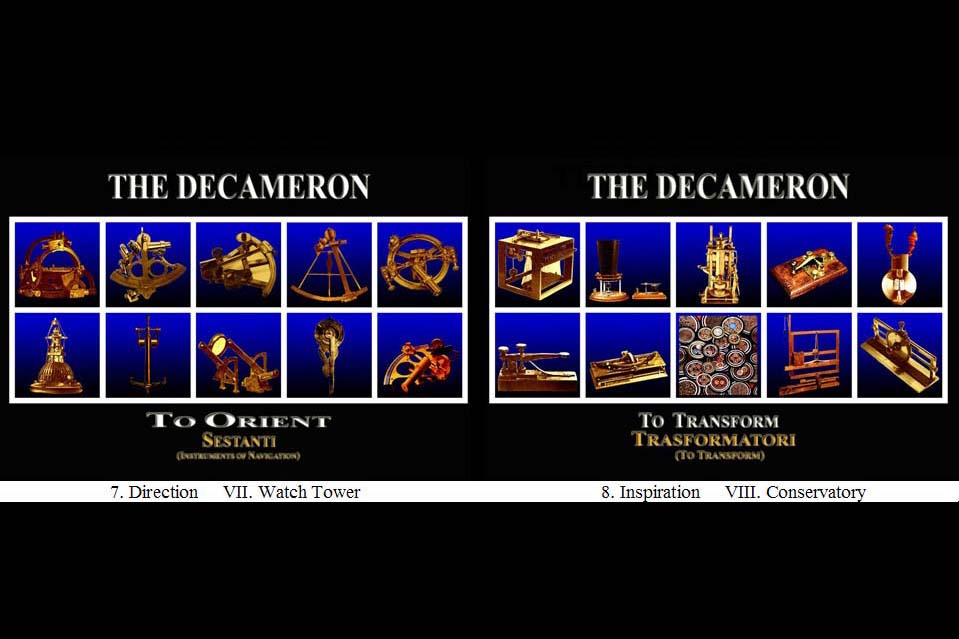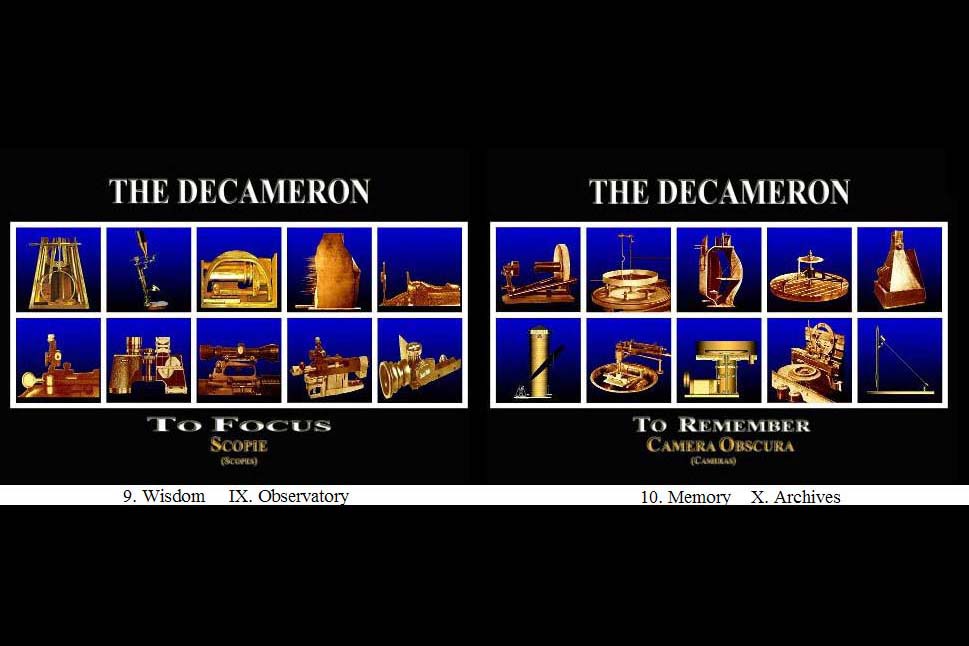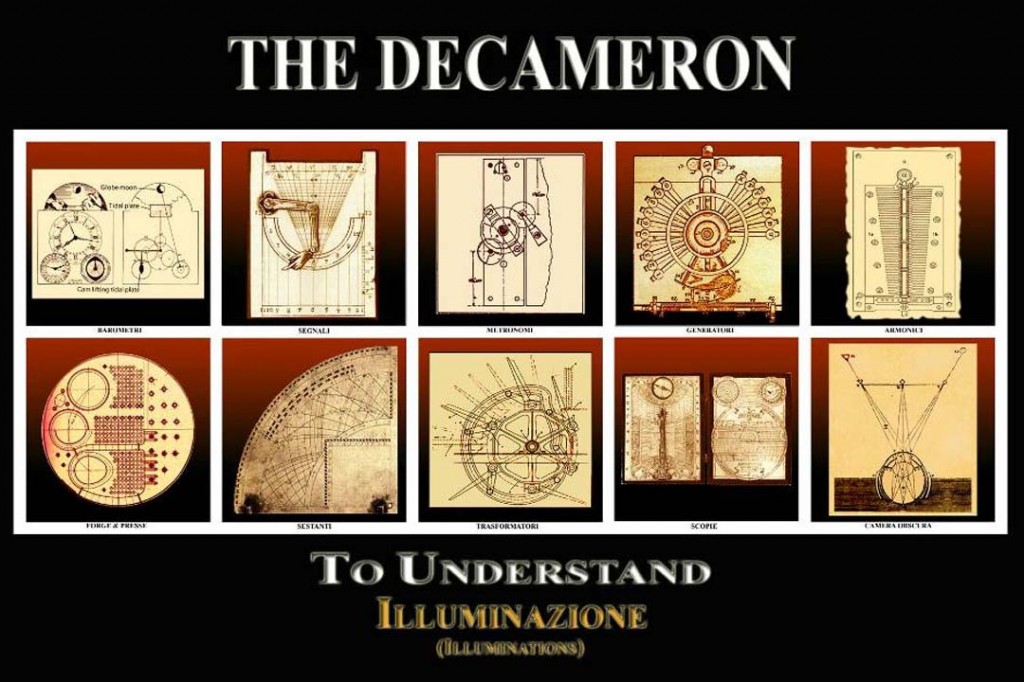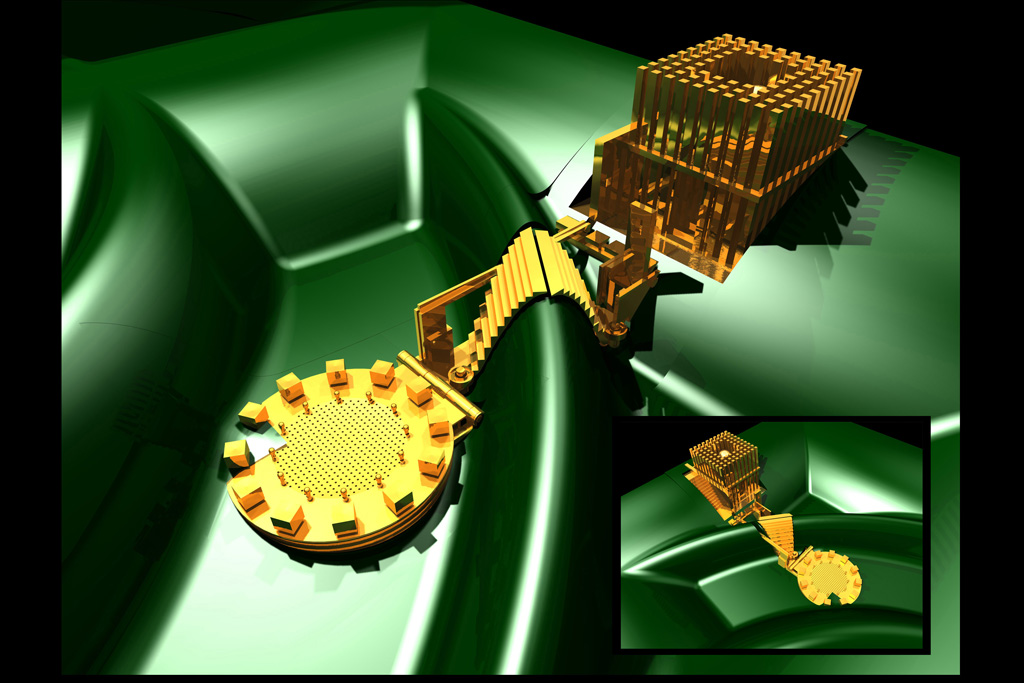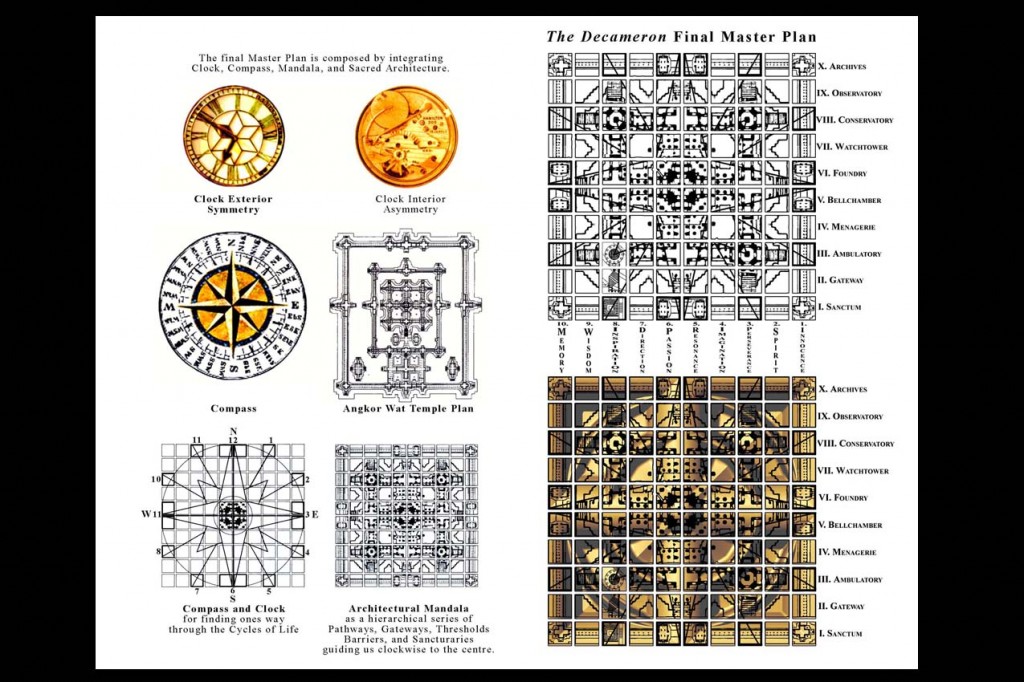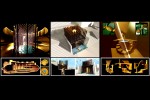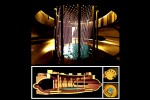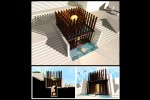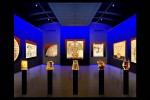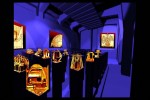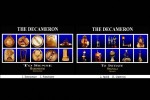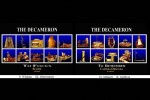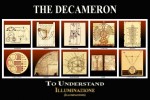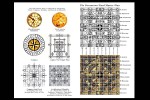The Decameron
THE DECAMERON is an on-going architectural design research project conceived as a virtual installation representing 100 examples of ‘narrative architecture’ – architecture capable of both ‘becoming a story’ and ‘telling a story’ by transforming perception over time. Decameron (approximate Greek for ‘ten days’) was the title of a 14th century literary masterpiece by Giovanni Boccaccio. It was the first widely known model throughout Europe for a collection of narratives set within the framework of a greater narrative tale. In Boccaccio’s work 10 individuals interpret 10 different story themes over the course of 10 days – 100 narratives in total, all set within the frame of yet another greater narrative.
THE DECAMERON as architecture uses Boccaccio’s literary masterpiece as a provocateur with which to challenge narrative expression within contemporary architecture. Like Boccaccio’s work, it translates 10 interrelated narrative themes from 10 points of view – 100 models in all. Each of the 100 models has its own unique story to tell, yet each story is intimately linked to the next in turn. When the 100 models are seen together as one, yet another narrative is revealed. All come together to ultimately respond as a single work of architecture.
In THE DECAMERON, 10 architectural Programs were selected to correspond to 10 stages of life (Personae). Each Program corresponds to an allegorical quality of each of the ten Personae. In the 100 tales of THE DECAMERON, each Persona interprets its own Program as well as the Program of the other 9 Personae. Each interpretation represents a unique perspective from a different stage of life. The ultimate goal of THE DECAMERON is to interpret these 10 Programs through 10 different perspectives, challenging potential new directions in architectural expression through narrative.
- New-Born Child: Innocence (to Sense) is represented by I. The Sanctuary
- Early Childhood: Spirit (to Initiate) is represented by II. The Gateway
- Late Childhood: Perseverance (to Sustain) is represented by III. The Ambulatory
- Early Adolescence: Imagination (to Discover) is represented by IV. The Menagerie
- Late Adolescence: Resonance (to Resonate) is represented by V. The Bell Chamber
- Early Adulthood: Passion (to Create) is represented by VI. The Foundry
- Mid-Life Adulthood: Direction (to Orient) is represented by VII. The Watch Tower
- Late Adulthood: Inspiration (to Transform) is represented by VIII. The Conservatory
- Old Age: Wisdom (to Focus) is represented by IX. The Observatory
- Approaching Death: Memory (to Remember) is represented by X. The Archives
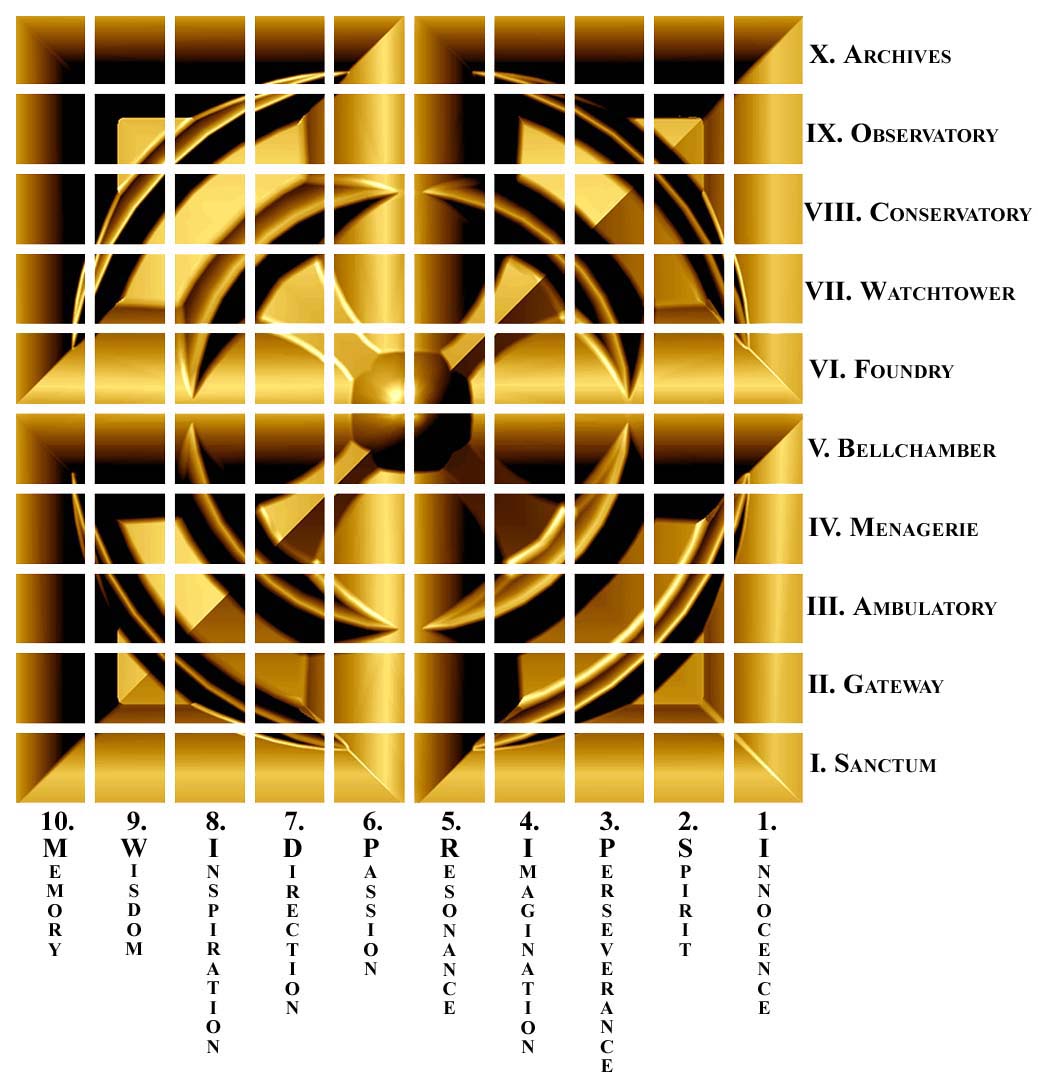 The site for THE DECAMERON is an imago mundi in the form of Time itself, symbolized by 3 formal manifestations of time superimposed upon one another: the Wave, the Pulse, and the Cycle. The Wave represents the struggle towards Equanimity, the continual quest to grow both intellectually and spiritually. The Pulse represents masculine time, the Marking of Time and the eternal quest to reach a state of harmony (to Compose). The Cycle represents feminine time, the Passing of Time and the eternal quest to Create. By superimposing these forms, profane time is transformed into Sacred Time, profane space is transformed into Sacred Space. An imago mundi is formed as the site for THE DECAMERON – divided into a 10 x 10 grid of 100 individual sites – and the 10 Rites of Passage are interpreted in the context of Sacred Space and Sacred Time.
The site for THE DECAMERON is an imago mundi in the form of Time itself, symbolized by 3 formal manifestations of time superimposed upon one another: the Wave, the Pulse, and the Cycle. The Wave represents the struggle towards Equanimity, the continual quest to grow both intellectually and spiritually. The Pulse represents masculine time, the Marking of Time and the eternal quest to reach a state of harmony (to Compose). The Cycle represents feminine time, the Passing of Time and the eternal quest to Create. By superimposing these forms, profane time is transformed into Sacred Time, profane space is transformed into Sacred Space. An imago mundi is formed as the site for THE DECAMERON – divided into a 10 x 10 grid of 100 individual sites – and the 10 Rites of Passage are interpreted in the context of Sacred Space and Sacred Time.
THE DECAMERON argues that narrative is a fundamental means by which architecture in the 21st century can be challenged to convey universal meaning across cultural and temporal boundaries. There are archetypal proportions, spaces and forms, patterns and relationships that invoke emotional responses from each of us on deeply subconscious levels – forms that evoke response from the collective unconscious, and are capable of interpretation on deeply intuitive levels regardless of cultural contexts. Through perceptive manipulation of such archetypical spaces, forms and patterns, contemporary architectural expression can touch the subconscious and convey clear, evocative poetic intentions through narrative expression. Architectural narrative is realized when archetypal forms and patterns are placed in oppositional relationships and interpreted as archetypal dualities (light/dark, high/low, vertical/horizontal, static/moving, relaxed/tense) within a temporal sequence. Such archetypical patterns and relationships, when interpreted over Time or through the collective unconscious, become intimate participants in a collective process. Perception evolves into perceptual transformation, and a narrative unfolds that is understandable on deeply intuitive and potentially universal levels.
Assistants: Erika Kruger and T. James Whitta
